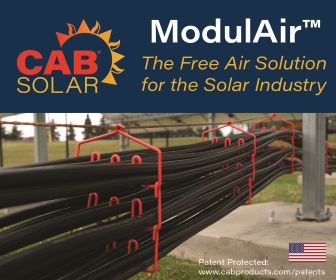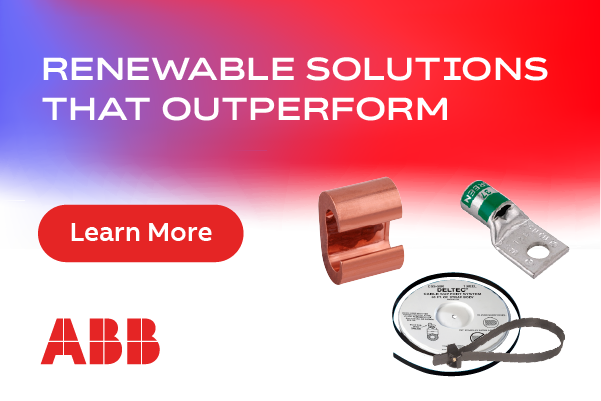Navigating the Permitting & Design Process of a Solar Power Project
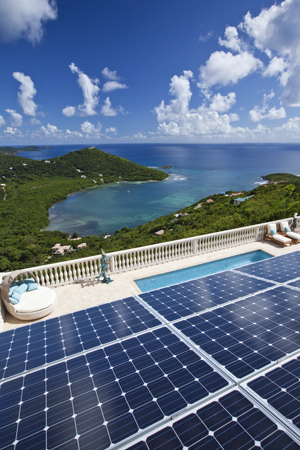 The proper installation of a solar array provides system owners with a renewable source of energy for several decades. The process of getting from conceptualization to installation, however, can be a grueling one if not managed correctly. From permitting to project design, maintenance, and monitoring, many factors must be evaluated and steps implemented for a successful solar installation.
The proper installation of a solar array provides system owners with a renewable source of energy for several decades. The process of getting from conceptualization to installation, however, can be a grueling one if not managed correctly. From permitting to project design, maintenance, and monitoring, many factors must be evaluated and steps implemented for a successful solar installation.
To maximize the return on investment (ROI), it’s imperative to follow the correct codes, select quality equipment (panels, mounting systems, etc.), and develop a project design that maximizes efficiency and energy output. There’s a lot to consider along the way…
A look at permitting
Building and electrical permits are usually legally required before any work on a solar installation can begin. These permits help ensure the grid, electrical customers, and their property are safe. Code requirements and permitting process vary somewhat from one jurisdiction to the next; however, most PV-related electrical codes are based on national electrical code standards.
Municipalities generally set solar permit fees using either a valuation or a flat-fee method, or a combination of the two. Valuation-based assessments calculate fees based on the cost of the solar system, whereas flat-fee methods charge the same fee regardless of system size. Permitting can take anywhere from three to six weeks for a commercial-scale project, and three to six months for a utility-scale project.
In areas without streamlined methods, the permitting process can be arduous and long. Many in the industry are calling for mandatory training for permitting officials unfamiliar with solar permitting standards, so as to simplify the process for all residential and commercial solar installations.
Contracting with a solar solutions’ provider who is familiar with local permitting fees, policies, and guidelines can be the key to a less arduous permitting process. Working with a PV system contractor that specializes in engineering, procurement, and construction (EPC) means a project can be controlled and managed from a single point of contact, which can result in a much more organized and streamlined project—from installation to implementation. EPC contractors can be responsible for everything from viability studies and permitting to project design and installation.
Project design & installation considerations
Before a solar permit can be approved, the solar farm conceptual design is created. Load calculations are performed to determine how much total power is required. If a business or residential customer is looking to calculate their energy load, it can be determined by reviewing previous electric bills to estimate usage. Load calculation is an important step, as it helps establish everything from the type of panels and inverts to use to the project layout, including the proper safety disconnects, batteries, and charger to utilize.
Sunlight levels must also be considered and factored into the design equation. A solar panel will only perform at optimum levels when correctly aligned with the sun. In the US and Northern Hemisphere, solar panels should face true south for optimum performance. Panels should also be tilted in relation to an array’s location and latitude for optimum power generation. Shading by buildings, trees, or other obstacle can cause substantial reductions in generated power, and should be taken into account during project design. The interconnection point, layout of the strings, and the distance between various components of a solar array should also be factored into the layout. The greater the distance between components and the interconnection point, the greater the drop in voltage.
A well-designed solar farm not only generates maximum energy at the highest efficiency levels, it also enhances the ease of operations and maintenance (O&M). Though tempting, price should not be the primary decision-making factor when installing a solar project. Systems that incorporate top-tier supplies tend to be more durable, reliable, and better able to provide maximum ROI. Do the research. Selecting the least expensive panel per watt can end up costing an asset manager a lot more money in the long run. Lower cost panels might also be lower watt panels, for instance, and require more panels per project. Along with higher maintenance concerns, consider the wiring, mounting, and any other parts or tools needed.
Another system design aspect that should be taken into account in regards to O&M is ground leveling. For a ground-mounted installation, level ground is important for navigating around a project site. Not only does this make cleaning and servicing easier for maintenance crews, managing vegetation is easier, too. Additionally, runoff and ground erosion may become a problem if the property is sloped.
A good asset manager will also assess a project in terms of the future, and consider how it will be accessed, monitored, and maintained. A monitoring system should be selected that not only includes a computer and display onsite, but remote access as well. This type of system allows technicians to monitor the health of the system, and set schedules for preventative maintenance. Any under-performance issues can, then, be recognized and resolved immediately to help maximize energy production and optimize operations.
Preventing design flaws
In most types of power plants, design flaws can result in catastrophic events. Take, for example, the nuclear crisis at the Fukushima power plant in Japan. A dangerous flaw resulted in cooling system failures in four reactors, causing explosions and fuel to melt down. In a solar power installation, design flaws can be hazardous and costly as well. Design weaknesses can lead to fires that damage not only the solar array, but also the rooftop or building on which it was built. Property or buildings adjacent to a ground-mounted solar project can also be affected.
A fire can occur in a solar array when ground shorts occur. Insulation can be damaged during an install that either doesn’t allow for proper spacing, or is simply poorly designed in that wires are exposed, pinched, crimped, or cut accidentally. Mounting design flaws can cause solar panels to get too hot, thereby decreasing output. It’s important to take careful and proper precautions during solar installations. Mount panels with a sufficient air gap under the panels to keep them at a normal temperature. Know the safety procedures, and plan project accordingly.
Maureen McHale is a marketing consultant, who has been actively promoting the solar industry and green products for the last six years (http://hiremaureen.com).
ESA Renewables, which provides turnkey solar PV systems, owns and operates a diverse portfolio of more than 500 solar PV power-generating facilities globally. They offer EPC and O&M services, as well as financing, testing, and monitoring.
ESA Renewables, LLC
http://esarenewables.com
Author: Maureen McHale
Volume: March/April 2013








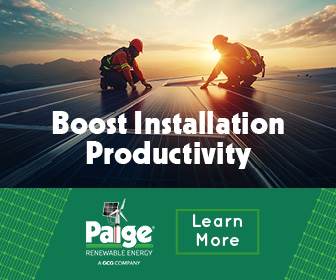
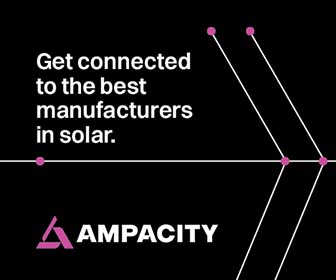
.png?r=5150)
